 The following is a guest post by the extremely talented outdoor photographer Duncan Fawkes. We discovered him on Twitter after seeing a selection of his powerful images from Scotland, the Peak District, the Lake District and Wales – four places for which we both have a deep affinity. A quick interaction between us soon led to this guest post, a review of the Fujifilm X-T1 interspersed with a handful of Duncan’s best images. We are certain you will enjoy reading his thoughts. Please remember to pay a visit to his website once you’ve finished reading to see more of his amazing work!
The following is a guest post by the extremely talented outdoor photographer Duncan Fawkes. We discovered him on Twitter after seeing a selection of his powerful images from Scotland, the Peak District, the Lake District and Wales – four places for which we both have a deep affinity. A quick interaction between us soon led to this guest post, a review of the Fujifilm X-T1 interspersed with a handful of Duncan’s best images. We are certain you will enjoy reading his thoughts. Please remember to pay a visit to his website once you’ve finished reading to see more of his amazing work!
I’ve been a Canon user since I started photographing seriously in 2007. For the last 6 years I’ve been using the Canon 5D Mark 2/3.
Overall I’ve been very happy with the 5D. The image quality is terrific, and the controls are very well laid out and intuitive. It’s a very usable camera and a great performer.
However I was finding that its size and weight meant that I would often leave it at home. For dedicated landscape photography trips I’d take the big bag with me, but for everything else – family days, day trips, commuting, a leisurely stroll – the only camera I had with me was my iPhone.

X-E1: Good but Not Right
My desire for a second camera coincided with the release of the [easyazon_link asin=”B0092MD6QW” locale=”US” new_window=”default” nofollow=”default” tag=”easyazon-textlink-20″ add_to_cart=”default” cloaking=”default” localization=”default” popups=”default”]Fujifilm X-E1[/easyazon_link] which promised great performance in a much smaller package. There was a lot to like about this camera. Although small and laggy, I loved the histogram and the focus peaking in the EVF. The image quality was excellent even ignoring its small form factor. And of course its smaller size and weight meant I was now carrying a very capable camera around with me.
There were various things I didn’t get on so well with. The AF performance was pretty poor, even after a massive firmware improvement. The rangefinder layout with the EVF set on the left side and its small size irked me.
The control layout also caused me some problems, for example my thumb would always rest on the Q menu button, and the exposure compensation dial would always gets knocked to -2. The shutter lag annoyed me, it always felt like I was taking images after the point I wanted to make it.
These and other minor issues meant that although I enjoyed the camera, I always preferred using my 5D when weight wasn’t a concern.
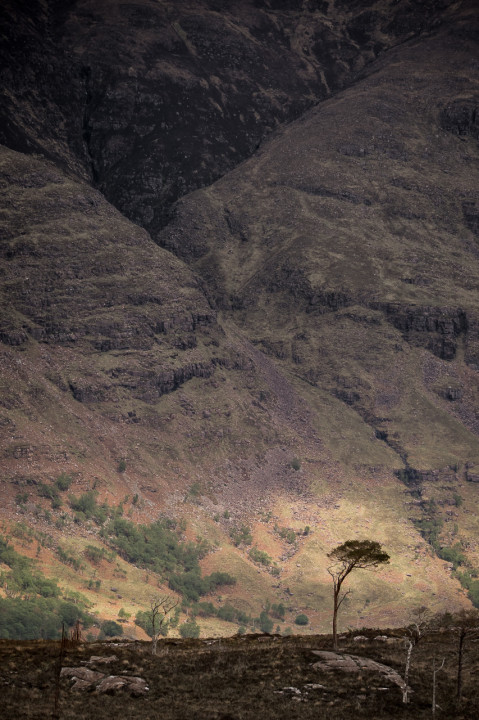
X-T1: Exciting Times
When the Fujifilm X-T1 was announced and the reviews started to come out I got pretty excited. This seemed to have all of the benefits I wanted from the X-E1 whilst resolving all my frustrations – a large, centrally placed EVF, revised control layout and stiffer and lockable control knobs, much improved AF and near zero shutter lag. As a landscape photographer, the weather sealing was also a massive advantage; though I expected it would be fine I never felt 100% comfortable using the X-E1 when the rain started.
I also had another reason to desire the X-T1. I’m becoming more adventurous with my photography and the locations I visit. In particular I wanted to go up more hills and mountains, but the thought of taking that big heavy Canon gear always gave me pause for thought. A lighter but capable alternative would help me to get off the beaten track and venture further afield.
I’ve now owned the X-T1 for 2 months and put it through its paces with daily usage on the loch shores, hills and mountains of the Scottish Highlands. I’ve made just over 4000 images, with almost 3000 of them being made using the X-T1. It’s been used in all manners of weather – mostly wet! – and at various altitudes and for different styles of photography. So I’d say I’m well placed to give an honest assessment of the camera versus my 5D3.
The short version is that I love this camera! I never intended it to become my primary camera, but it is quickly becoming so and I find myself reaching for the 5D3 less often.
Let me cover some of the massive plus points. These are covered in other reviews, but what a review says and real world usage aren’t always the same thing.
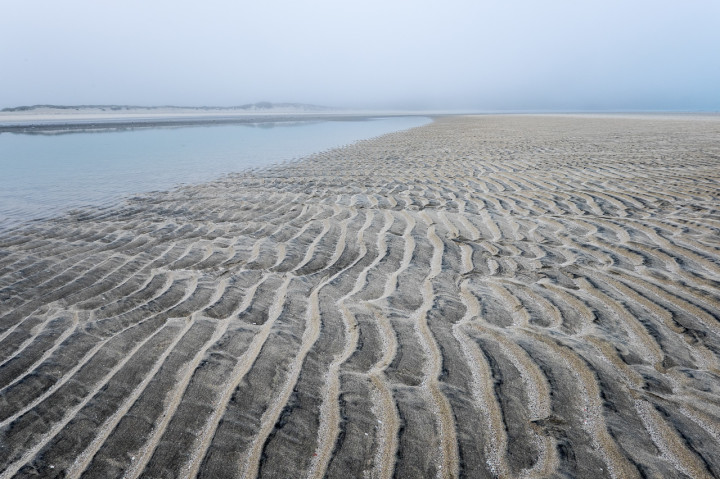
EVF
The first thing is that the EVF is incredible. Everyone’s talked about it. It’s massive, big and bright. I thought my 5D3’s was a good size, but this thing is huge – like comparing an iMAX cinema to your 37” TV at home. It has an all encompassing quality to it.
Combine the huge size and lack of lag – some say they still perceive it, but from a landscaper’s perspective it is negligible – with the huge benefits of an EVF and it’s an amazing photographic experience. I have always used LiveView on the rear LCD of the 5D3. Referencing the histogram in real time is a key part of my workflow. Having this histogram appear in the large EVF means I can use the EVF as effectively as I can the rear LCD.
Having access to Focus Assist (peaking, split image, and zooming) available in the EVF is totally brilliant, as is being able to see an image in low light (or with a strong ND filter fitted) due to the amplified display. On my Canon the viewfinder would be black.
It’s also great that I don’t have to switch LiveView off to use the viewfinder as I do on my Canon; the eye sensor on the X-T1 switches the display to the EVF automatically. This means that when I’m using my Canon now I put my eye to the VF without realising it will be blacked out!

Layout
Regarding the position of the EVF, I much prefer the centrally located and higher viewfinder. I may be a DSLR dinosaur but this feels much more comfortable to me,with the controls well placed around it.
There is one major advantage of the new placement for a tripod user. With the X-E1 the eye sensor was near the left edge of the camera. This meant that if I ever used my left hand to operate the cameras controls the eye sensor would switch the LCD off as my arm passed over it (making it rather difficult to change the control in question!).
I could use the View Mode button to keep the LCD on but this meant I had to cycle the view mode if I wanted to use the viewfinder and the LCD interchangeably.
With the centrally located viewfinder I don’t have this problem and can use both hands to operate the camera without the LCD switching off on me. Happy days!
The layout of the controls doesn’t look very much different to the X-E1 but has changed sufficiently to feel more natural to a DSLR user, and also to move buttons away from my thumb’s resting position. I find myself accidently pressing buttons less often.
The stiffer Exposure Compensation dial is a welcome change and is much less prone to being knocked out of position. It still happens, but not as often. One could argue that the EC dial is now too stiff, sometimes I need to use two fingers with the eye to the camera and in trying to push it round I often press the video record button – which is very badly placed in my opinion – by accident. I think a lock would have been preferable.
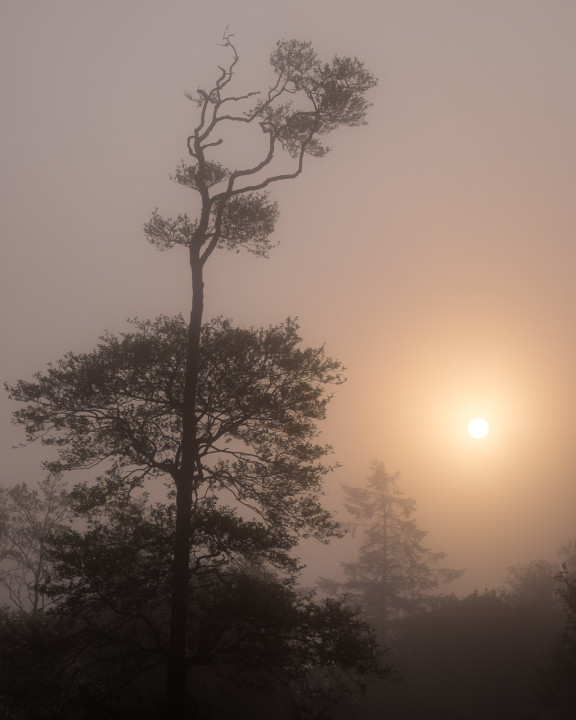
However the new DRIVE dial – which is used to select between Single Shot, Continuous (High and Low), Bracketing, Panorama mode, and so forth – has introduced a new problem, and I find that this is often knocked out of position. It often lands on Bracketing mode or Multiple Exposure mode. It would be better if this was stiffer or lockable. Failing that, I think it would be better if Single Shot was the first option so that I know that I’m in Single Shot mode when I can’t turn the dial any further.
One of the biggest complaints X-T1 users have had is regarding the 4-way control pad being too recessed into the body. I can understand what they mean but I honestly don’t have much problem with it.
What I do have a problem with is the Focus Assist button, which is practically flush with the body. I find it very difficult to find with my eye to the viewfinder as it offers little feedback when my thumb is on it. The AF-L button is also victim to this problem, but being closer to the camera’s edge and being in a more usual position causes fewer control fumbles.
Like many I have turned to DIY modifications to improve the camera’s handling by using Sugru (a chewing gum-esque rubber) to improve the size of the Focus Assist and AF-L buttons so that I can find them more easily. I used the leftover Sugru to improve the tactility of the 4-way pad too!

Always in Manual
One of the things I love about the Fujifilm cameras is the sense that you’re always shooting in Manual mode. Whilst Canon (and Nikon) give us Manual, Aperture Priority and Shutter Priority modes, there are no such modes on the X-T1. The X-T1 allows the user to select an aperture, shutter speed and ISO using separate dials or just choose Auto for each for the camera to decide.
In a sense the X-T1 is always in manual mode, but I can choose to not worry about a particular setting. Want Aperture Priority? Select the aperture and leave the shutter on Auto. Want Shutter Priority? Select a shutter and leave aperture on Auto. Want full Manual? Choose the aperture and shutter yourself.
On my Canon changing modes can be a pain. As well the aperture I’ve selected isn’t retained from Aperture Priority when I switch to Manual or Bulb, so I need to reselect it (or is often the case, forget to and use the wrong aperture!).
The Fujifilm approach is much more intuitive to the point that the modes on my Canon now seem like a strange anachronism.

Other Features
For many the articulated screen will be seen as a gimmick, but I suspect too many people are using their cameras at eye level. I often have my tripod set to ground level and in awkward spots, so being able to articulate the screen is a huge help. Further, I have an extra large tripod that is taller than I am. With an articulated screen I can still mount and use the camera above head height – handy for e.g. avoiding walls and fences – brilliant!
The new Wifi control app can be used for similar things, but so far I have a bit of a love/hate relationship with it. My biggest annoyance is that it takes ages to connect which is a bit of a deal breaker for me. When in the landscape I need things to just work when I need them and can’t wait for 30 seconds hoping it will connect to my iPhone (or not). It’s certainly not a replacement for a regular remote and it will have its uses, I just can’t help feeling this feature could have been much better.

My final annoyance with the camera is regarding focus point selection. When in Live View, the 5D3 has a cursor on the LCD which is used to autofocus and zoom. I use this to move about my image to check focus in various areas and also to check the edges of my image.
With the X-T1, I can only focus and zoom (Focus Assist) on one of the 49 fixed AF points. This means that I often have to set my AF point, zoom in, zoom out, change AF point, zoom in, zoom out, and then go back to my original AF point. It feels a lot more restrictive than being able to move my AF point anywhere in the frame, even if in practice it doesn’t cause too many problems.
It would be remiss of me not to mention a problem I did have with the X-T1 in the mountains recently. I found I had issues with condensation after a wet climb up Beinn Eighe (1010m) in Torridon. The viewfinder on the X-T1 had fogged up, as had the internal lens elements of the 10-24 and the 55-200. Now, I’m going to hold my hands up and say everything was pretty wet and that’s an issue for me to deal with.
But I couldn’t help thinking that weather sealed lenses – mysteriously missing on the X-T1’s release – would have reduced the problem. I can’t recall similar issues in all of my years using my Canon in equally if not worse conditions. It’s knocked my confidence in the Fuji kit a little in the worse conditions so I’ll be more careful with it in the future.
Obviously it’s easier to talk about one’s niggles with a camera than to talk about the things you love. This is quite natural; if things just work well you don’t notice them. Things that get in your way tend to irk you and you remember them. There’s not a camera in existence that doesn’t have niggles, and since using my X-T1 I’m finding more niggles with my 5D3 than I used to.
The final thing to say about the X-T1 is that it is a fun camera to use. Loads of fun! Where does the fun come from? I think it’s the overall package of size and weight, feature set, ergonomics, retro-styling, confidence in the IQ and the image stabilisation of the lenses. It just makes you want to take it with you and make pictures. By comparison the 5D3 could be described as workmanlike – a very dependable camera with great performance, but much less exciting to use.
It’s easy to dismiss the notion of a ‘lightweight’ camera as anything more than something for lazy people. Yet having a small and lightweight camera is much more than just saving a few kilograms on a hike. I find it easier to handle and less cumbersome. With everything being smaller – including the [easyazon_link cloaking=”default” keywords=”Lee seven5 filters” localization=”default” locale=”UK” nofollow=”default” new_window=”default” tag=”mirrorlessons-21″]Lee seven5 filters[/easyazon_link] I use – I feel like I have an extra arm where I’m normally looking for somewhere to put something down while juggling cameras and filters.
Everything about the camera is incredibly liberating.
You may notice that I’ve been talking about this camera for ages without really talking about the images. Well, it’s my opinion these days that most cameras exceed most people’s image quality requirements. I think what is important now is the feature set of the camera and its ergonomics. It has become a much more personal choice rather than an absolute choice based on tech specs.
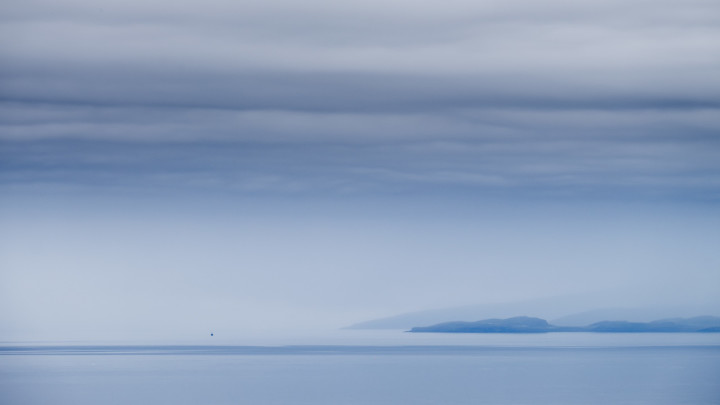
But to allay any concerns you may have, the IQ of the X-T1 (paired with the XF 10-24mm and XF 55-200mm for the most part) has exceeded my expectations. Whilst it may have fewer megapixels than the 5D3, it seems to me to have better dynamic range and the shadows are less prone to noise. There are differences in colour and tonal rendition but neither ‘wins’, they’re just different and it’s down to personal choice.
In terms of detail I’ve done a few real world side-by-side test shots in the field and most people couldn’t tell them apart at 100%. In some cases I even think the X-T1 wins. This result seems intuitively wrong to me and I’m not going to go on record saying that the “X-T1 whoops the 5D3’s butt”. But I will go on record as saying that the image quality is so good that, for the most part, it doesn’t matter.
Seriously I’m not going to trivialise my imagery by looking for infinitesimal differences between the two at 100%, life’s too short. I’m comfortable with the results enough that I’ve taken to shooting most of my frames with the X-T1 where I thought it would be the other way around.
So, will I sell all of my Canon gear and go Fuji full time? Not at this stage. I continue to use both cameras heavily if not 50-50. But let’s just say that Canon had better be working on something very special. Word is that they are, but that’s been the rumour since the Nikon D800 came out! By the time the Fujifilm X-T2 has come out we’ll know how – or perhaps if – Canon will have responded to the incredible range of cameras that Fujifilm are coming out with.
One thing is clear, it’s an exciting time to be a photographer.
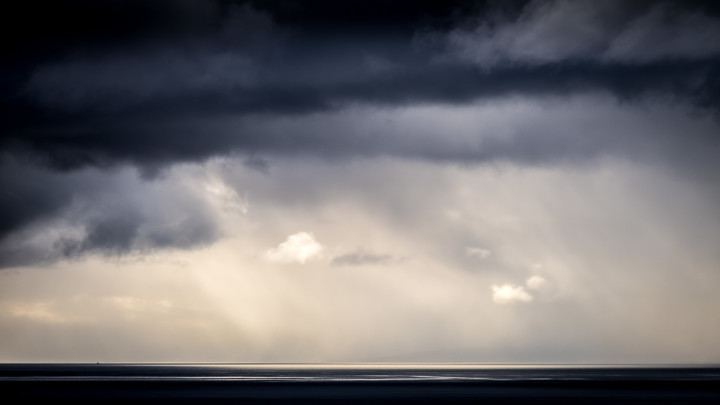
Duncan’s Biography: Though I currently live in the Peak District my heart remains in my native Scotland. For me it is a place of boundless beauty and atmosphere from tranquil lochs to magnificent mountains. Coupled with the dynamic weather we often witness on these shores, Scotland and its various moods represents the perfect environment for me as a landscape photographer. My photography tends to avoid more obvious and illustrative views instead taking a personal approach based on mood, feeling and a hint of mystery. If you’d like to to learn more about my photography and my creative approach I post regularly on my website and run workshops across the UK.
To see more of Duncan’s beautiful landscape work, head over to his website and follow him on Facebook, Twitter, Google+ and Flickr!
